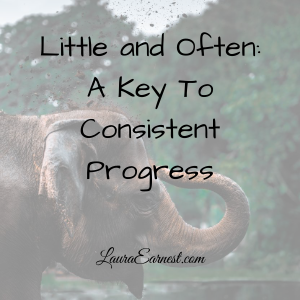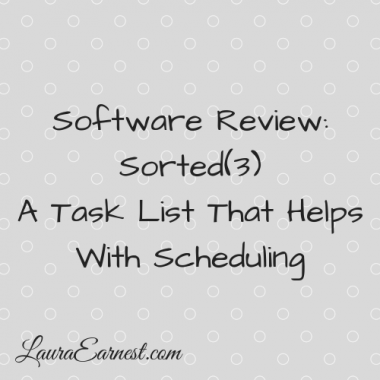
Little and Often: A Key To Consistent Progress
One of the things that I still struggle with, years into the productivity space, is making my to-do list doable. I don’t want to put each step to complete something on the list, because a) I don’t need to be reminded that I need to fetch the stepladder when changing a light bulb, and b) the list gets far too long the more granular I go.
On the other hand, if the tasks are too big, then I can’t get them done in a small amount of time.
Enter Little And Often, one of Mark Forster’s concepts.
I’ve been a fan of Mark Forster for a long time now. Besides being an eloquent writer, he takes it upon himself to innovate new systems and then try them out in his own life.
A Realization
I was reading Mark Forster’s blog, trying to glean some more insight into his systems, when I ran across the following:
Just as with Do It Tomorrow, you don’t necessarily have to do the whole of every item. You can always do part of it and then cross it out and re-enter it at the end of the list. This achieves the little and often ideal which I recommend in my books for dealing with major projects.
What a concept! You don’t have to do it all in one sitting!
Little And Often Defined
In Mark’s book, Do It Tomorrow and Other Secrets of Time Management* Little And Often is one of the key concepts. It means for any task, you should do a little bit often, rather than waiting until you have a large chunk of time and do it all.
There are advantages to doing it this way: you avoid the perfectionist feeling you have to get it right the first time; you can circumvent procrastination on a seemingly overwhelming task by doing a bit; and you avoid burnout.
As a concrete example of little and often, if your goal was to run a marathon, it would be best to run frequently for short periods, rather than waiting until the day before the race and trying to run for six hours.
How To Apply It
My realization was that, although I understood mentally that you should eat the elephant one bite at a time, I thought that what had to go on the to-do list was a discrete task that could be completed in a short period of time.
Now I see that I can just put the task on the list, work on it for a small amount of time, and move the task on if it isn’t finished. This frees me from the need I saw to figure out what each discrete step is and write it down.
What This Means For My Lists
Little and Often is giving me the freedom with my lists. I don’t have to do a deep dive into the minutiae of the tasks, meaning I have less maintenance time needed on the system. At the same time, I don’t have to reject doing anything on a task because I can’t complete it in the time I have before me.
So. Much. More. Freedom.
Conclusion
Little and Often simply means to put the information on your list, work on it for a short period, and if the item isn’t done at the end of the day, move it on. This gives me a greater freedom from being either bogged down in the details or in being overwhelmed in writing my lists.




